The 1950s were a pivotal decade for fashion, characterized by a distinct gender divide in styles and an evolution of silhouettes that reflected broader social changes. Women’s fashion during this era was defined by elegance, formality, and meticulous attention to detail, while men’s clothing saw a mature shift toward more casual and relaxed styles.
As the decade began, the influence of Christian Dior’s ‘New Look’, which debuted in 1947, still loomed large. This iconic style featured a nipped-in waist and full skirts, and it dominated women’s wardrobes well into the 1950s. However, as the decade progressed, fashion began to embrace new silhouettes. Designers like Cristobal Balenciaga and Hubert de Givenchy offered fresh perspectives that challenged the extravagance of Dior’s vision, introducing more streamlined and sophisticated forms.
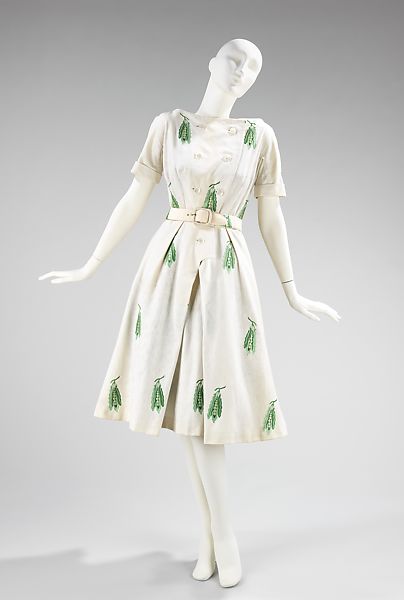
Image: Source Fashion History Timeline
Mid-decade heralded a more relaxed approach to fashion. The structural details of earlier designs softened, and there was a noticeable shift towards straighter lines. This evolution was highlighted by the introduction of styles like the sheath dress and the high-waisted chemise, which celebrated the natural shape of women’s bodies. The playful pea motifs and vibrant patterns became increasingly prevalent, showcasing an era of fun in fashion.
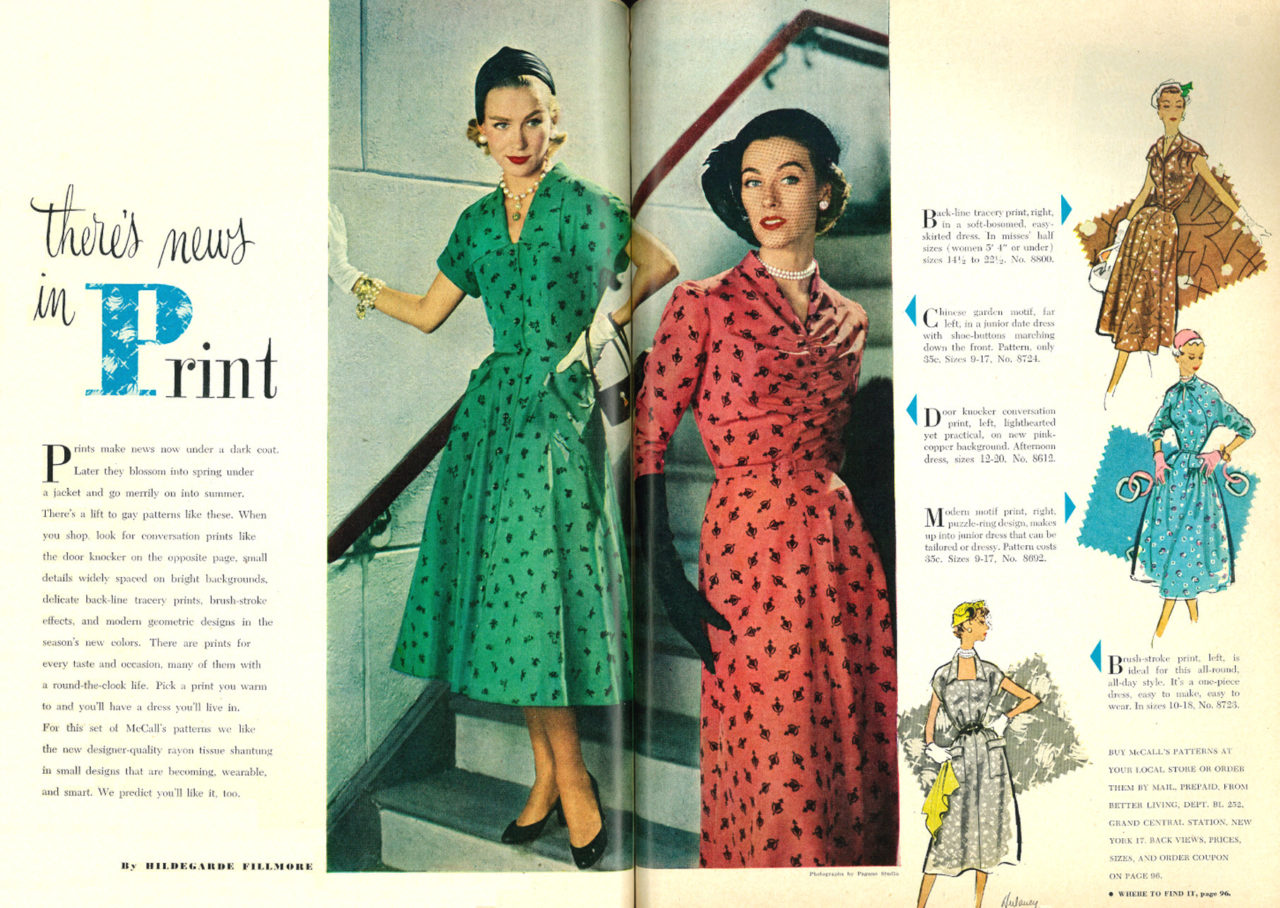
Image: Source Fashion History Timeline
Men’s fashion saw a striking transformation as well. The informal aesthetic surged in popularity, largely influenced by cultural icons such as James Dean and Marlon Brando, whose looks became synonymous with youthful rebellion. The quintessential combination of a white t-shirt, jeans, and leather jackets became a symbol for the burgeoning youth culture of the decade.
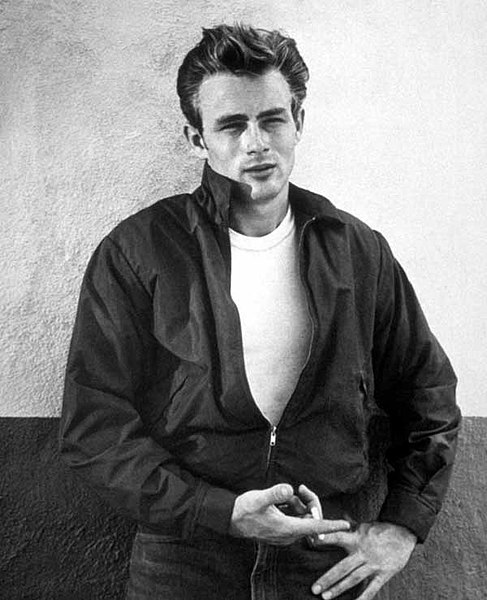
Image: Source Fashion History Timeline
General men’s attire shifted towards more casual options, with the introduction of the ‘Teddy Boy’ style in Britain, characterized by narrow trousers, velvet-collared jackets, and quiffed hair. This representation of youthful defiance blurred the lines between working-class and upper-class fashion, as tailored designs once reserved for the elite were adopted by the broader youth populace.
Despite these relaxed styles, the allure of elegance was not lost. Evening wear in the 1950s remained formal, with full-skirted dresses continuing to reign supreme at cocktail parties. The emergence of the cocktail dress—a style that was as decorative as it was versatile—enhanced the need for ladies to be impeccably dressed for every occasion, complete with matching accessories.
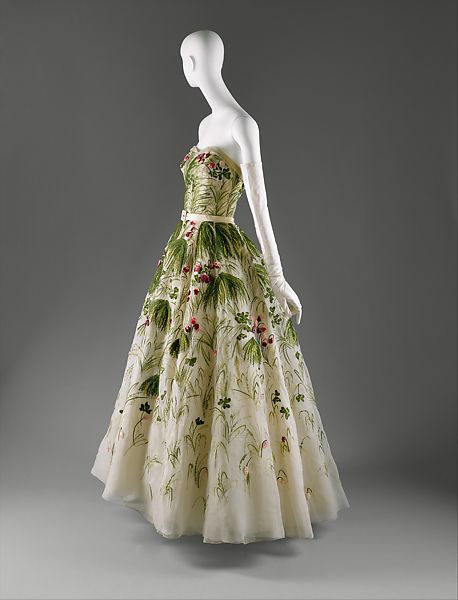
Image: Source Fashion History Timeline
Children’s fashion reflected these adult trends, with young girls donning dresses with full skirts and coordinated accessories, while boys moved towards more casual options like collared shirts and jeans. The new synthetics made clothing easy to care for and fashion-forward, mirroring the trends of their parents.

Image: Source Fashion History Timeline
As 1950s America progressed, the importance of matching accessories became evident. Fashion photography from this decade encapsulated the need for women and girls to present a polished appearance through coordinated styles—from shoes and hats to handbags and jewelry. This emphasis on detail culminated in a fashion that sought not only beauty but also sophistication.
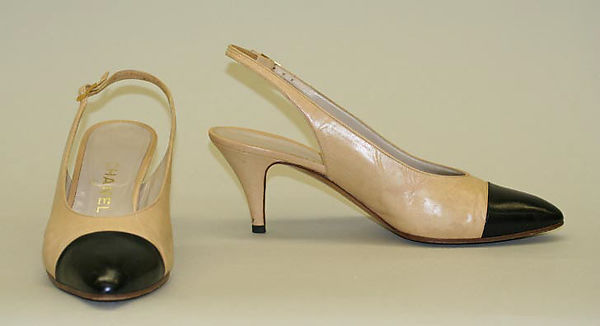
Image: Source Fashion History Timeline
In conclusion, the 1950s were marked by contradictory trends in fashion—where elegance met casual comfort, and classic silhouettes gave way to youthful rebellion. This decade laid the groundwork for the modern evolution of fashion, encouraging diversity and personal expression, ultimately shaping the styles we embrace today.